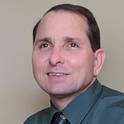Article
Functional role for Sp1 in transcriptional amplification of a cell cycle regulated histone H4 gene
Biochemistry
(1995)
Abstract
The promoter of the cell cycle regulated histone FO108 H4 gene is mediated by two in vivo protein/DNA interaction domains, sites I and II. We have shown previously that site II mediates the cell cycle controlled enhancement of H4 gene transcription at the G1/S phase boundary. Here we show that site I, an element containing both G-rich and ATF-like consensus sequences, confers maximal levels of transcription in proliferating cells. By the combined application of gel shift assays with site-directed mutagenesis, DNase I footprinting, oligonucleotide competition, in vitro expression of recombinant proteins, and specific antibody supershift studies, we demonstrate that the proximal G-rich sequence within site I interacts with the transcription factor Sp1, while the distal portion of site I interacts with members of the ATF family of proteins, including ATF-1. In vitro transcription studies as well as expression assays of transiently and stably transfected genes in HeLa cells reveal that the deletion of site I causes a dramatic decrease in expression. Mutation of the Sp1 element, which abolishes Sp1 binding, results in a 6-10-fold reduction in reporter activity. In addition, overexpression of Sp1 in Sp1-deficient cells results in the dramatic activation of the histone promoter. In contrast, mutation of the asymmetric ATF binding site, located distally within site I, has a more limited effect upon expression. Interestingly, the contribution of the Sp1 site to maximal transcription was cell type dependent. Thus, we demonstrate that the Sp1 binding site of the site I histone H4 promoter in particular is critical for maximal expression in living cells and postulate that this site may act to amplify the cell cycle response.
Disciplines
Publication Date
June, 1995
DOI
https://doi.org/10.1021/bi00023a011
Citation Information
Mark J. Birnbaum, Kenneth L Wright, Andre J. Van Wijnen, Anna L Ramsey-Ewing, et al.. "Functional role for Sp1 in transcriptional amplification of a cell cycle regulated histone H4 gene" Biochemistry Vol. 34 Iss. 23 (1995) p. 7648 - 7658 Available at: http://works.bepress.com/thomas-last/6/
